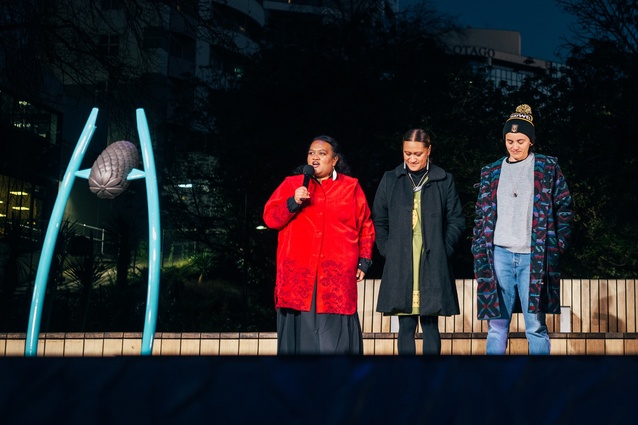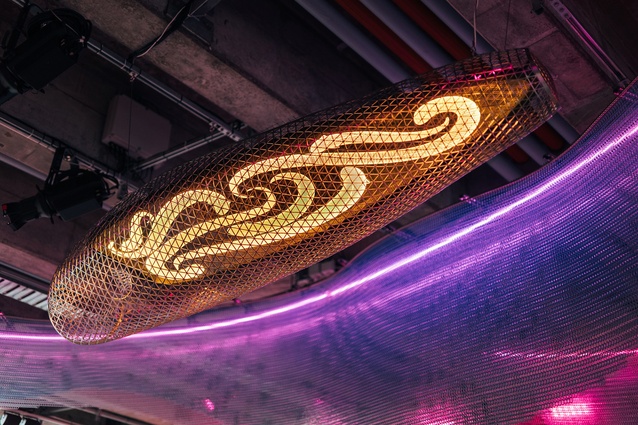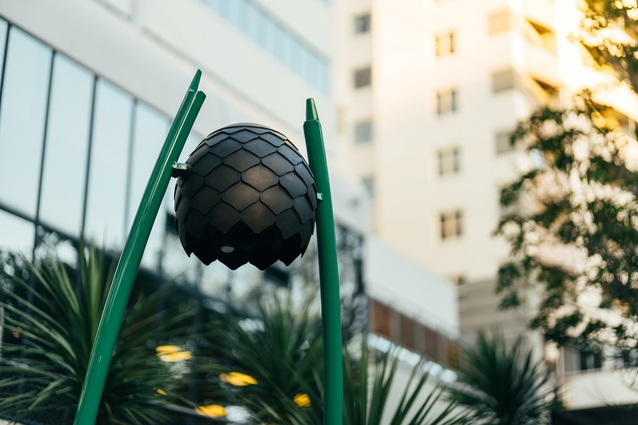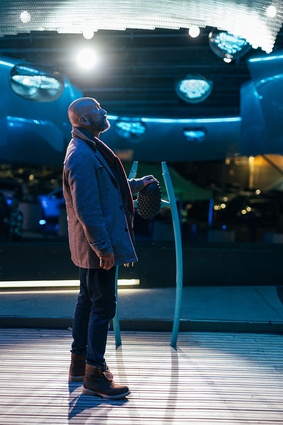Myers Park’s Waimahara ‘sings’ with you in light and sound
In what is thought to be a world-first for public art, Waimahara in Tāmaki Makaurau Auckland’s Myers Park is an artwork that listens and responds when it hears a special waiata, accompanying the singer with a display of light and sound.
Commissioned by Auckland Council, Waimahara was created by Graham Tipene (Ngāti Whātua, Ngāti Kahu, Ngāti Hine, Ngāti Hāua, Ngāti Manu) alongside technology specialists IION and a composer team who have crafted two original waiata for the artwork.
Ngāti Whātua Ōrākei were joined by artists, composers, performers, design collaborators and representatives from Auckland Council and the Waitematā Local Board at dusk on Thursday 27 June to open and celebrate the interactive elements of the artwork.
“The first stage of Waimahara opened in December 2023 as an ambient experience,” explains Hayley Wolters, Public Art Manager from Auckland Council. “Over summer, visitors enjoyed a constantly changing display of audio and light, triggered by their movement in the underpass and the effects of wind and weather.”
Now, visitors have a new way to interact with the artwork, where on-site elements guide and support those who want to learn and sing the waiata to trigger the full light and sound show.
“If you learn one of the waiata and sing it into the sculptural sensor positioned on the boardwalk, you’ll trigger an elaborate audio and light response to accompany you,” explains Councillor Richard Hills. “Or, if you prefer not to sing, you can watch others perform or experience a more subtle, ambient display of light and sound with your presence in the underpass.”
Tipene says he wanted this artwork to support feelings of inclusiveness, belonging and welcome, by asking people to take part. “With most artwork, you stand in front of it, but I wanted us to think differently with this one,” he explains. “I wanted the experience to surround you. I wanted this artwork to ask you to prepare your senses – to look, feel and listen. If you sing the right notes – the tune, the pitch – this artwork will ‘sing’ with you.”
The composers were Moeahi Kerehoma (Te Aitanga-a-Māhaki, Ngāti Whātua Ōrākei, Te Whakatōhea, Te Whānau-a-Apanui, Tūhoe, Ngāi Takoto, Te Rarawa), Tarumai-i-Tawhiti Kerehoma-Hoani (Te Aitanga-a-Māhaki, Ngāti Whātua Ōrākei, Te Whakatōhea, Te Whānau-ā-Apanui, Tūhoe, Ngāi Takoto, Te Rarawa) and Tuirina Wehi (Ngāti Ruapani), and the audio producer was Justyn Pilbrow (Ngāti Kahu).
The name Waimahara means a remembering of water, and a remembering of Te Waihorotiu, the stream that flows quietly underneath the underpass. Composer Tarumai-i-tawhiti Kerehoma-Hoani says the waiata speak about the importance of water in te ao Māori.
“In the lyrics, we also talk about recognising and always acknowledging our environment – the wind, the rain – how the cycle of life continues and is everlasting,” says Tarumai.
“We pay respect to our ancestors who have held onto the knowledge that has been handed down to us. We’re fortunate to still retain that knowledge. It’s good to have an understanding of how we fit into this world. When we understand that in its entirety, we’re able to foster and be the guardians that we should be for the water, the land and the air that we breathe.”
Tessa Harris (Ngāi Tai ki Tāmaki) developed a cultural artwork that can be seen in the patterning on the stairway that connects the Mayoral Drive and Queen Street corner with Myers Park.
















